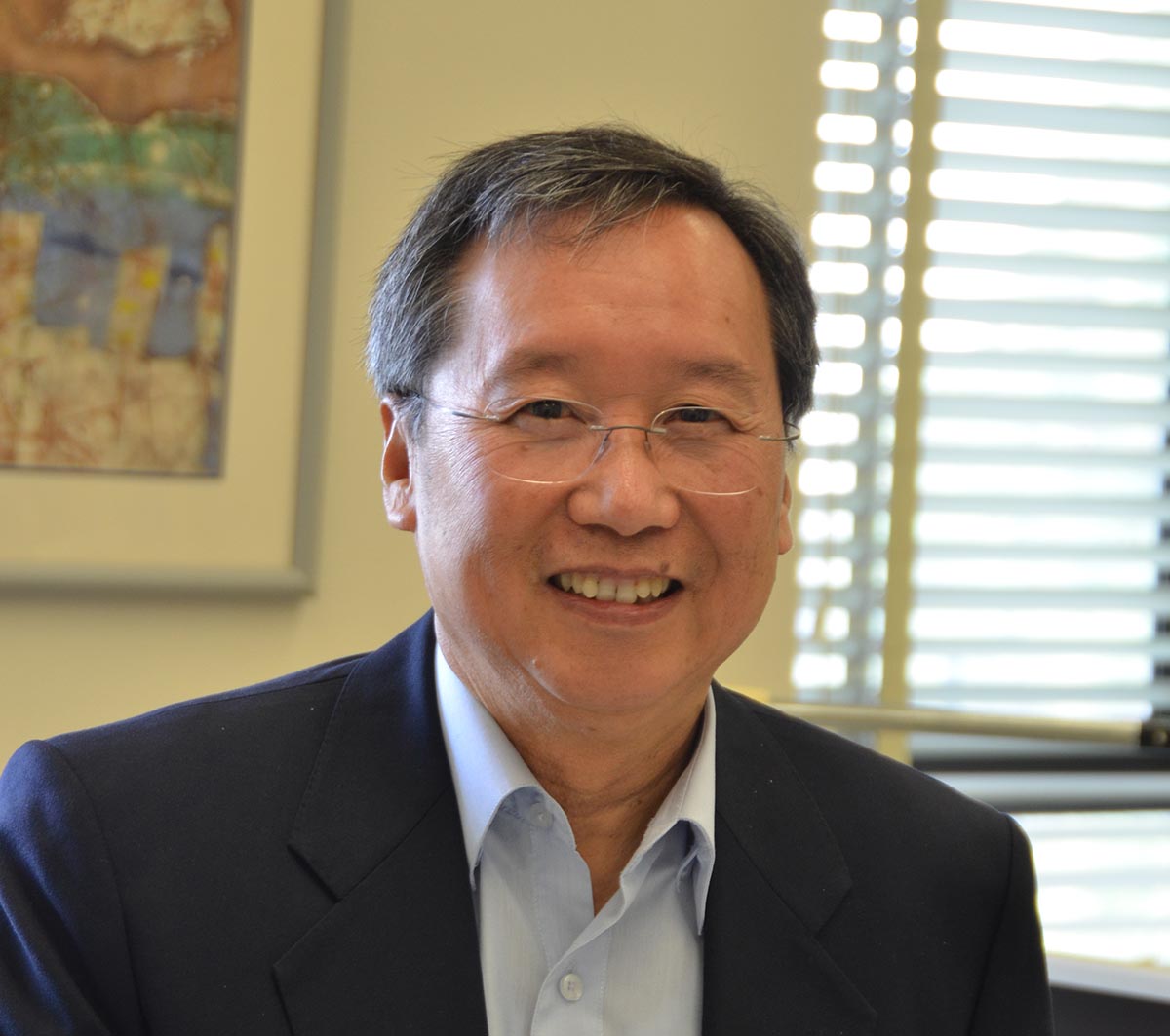Steven G. Louie received his Ph.D. in physics from UC Berkeley in 1976. After having worked at the IBM Watson Research Center, Bell Laboratories, and University of Pennsylvania, he joined the UC Berkeley faculty in 1980. He is a member of the National Academy of Sciences (2005), fellow of the American Physical Society (1985), senior faculty scientist and Theory Facility Director of the Molecular Foundry at LBNL, and editor of the journal Solid State Communications. He has been awarded a Sloan Fellowship (1980), a Guggenheim Fellowship (1989), two Miller Professorships (1986, 1995), the U.S. Department of Energy Award for Sustained Outstanding Research in Solid State Physics (1993), the Lawrence Berkeley National Laboratory’s Outstanding Performance Award (1995), the Aneesur Rahman Prize for Computational Physics of the American Physical Society (1996), the Davisson-Germer Prize in Surface Physics of the American Physical Society (1999), and shared with M. L. Cohen the Foresight Institute Richard P. Feynman Prize in Nanotechnology (2003). He is identified by the ISI as one of the most highly cited researchers in physics.
Research Interests
My interests are in theoretical condensed matter physics and nanoscience including: electronic and structural properties of crystals, surfaces, interfaces and clusters; quasiparticle and optical excitations in solids and nanostructures; electron correlation effects in bulk and reduced-dimensional systems; carbon and BN nanotubes; graphene; superconductivity; electron transport through single molecules and other nanostructures. The objective is to explain and predict the properties of materials using first-principles theories and computation.
Current Projects
A major interest of my group is nanoscience, in particular, systems involving nanotubes, graphene and molecular junctions. Nanotubes are tubular structures, typically of the order of a nanometer in diameter but microns in length. These quasi-1D materials have novel properties (e.g., chiral currents, quantized conductance, giant excitonic effects, etc.) of fundamental and practical interest. Systems being studied include carbon and BN nanotubes, defects and adsorbates on nanotubes, nanotube junctions, etc. Various structures consisting of assembly of nanotubes and other nano-objects such as fullerenes and clusters are also being investigated.
Molecular electronics (i.e., electron transport through single molecules or other nano-objects) and friction (dissipation of mechanical energy) on the nanoscale are also topics of interest. Owing to their reduced dimensionality, highly unusual properties have been predicted and found in the I-V and friction behaviors of nanostructures.
Many properties of materials are strongly affected by electron correlation effects. We are developing methods to study these effects. In particular, first-principles interacting one-particle and two-particle Green’s function approaches are used to compute quasiparticle energies and optical spectra for interpreting spectroscopic data and to predict phenomena such as photo-induced transformations. Many-electron effects are particularly dominant in reduced dimensional systems such as surfaces, polymers, graphene, clusters, nanotubes and other nanostructures.
We are also interested in superconductivity and phenomena related to electron-phonon interaction and phonon renormalization. Other activities in the group include ab initio studies of novel nano-photovoltaic systems and of the electronic and structural properties of materials under extreme conditions.
Publications
C. D. Spataru, S. Ismail-Beigi, L. X. Benedict, and S. G. Louie, “Excitonic Effects and Optical Spectra of Single-Walled Carbon Nanotubes", Phys. Rev. Lett. 92, 077402 (2004).
M. Grobis, et al., “Spatially Dependent Inelastic Tunneling in a Single Metallofullerene,” Phys. Rev. Lett. 94, 136802 (2005).
P. H. Zhang, S. G. Louie, and M. L. Cohen, "Nonlocal Screening, Electron-Phonon coupling, and Phonon Renormalization in Metals," Phys. Rev. Lett. 94, 225502 (2005).
C. D. Spataru, S. Ismail-Beigi, R. B. Capaz, and S. G. Louie, "Theory and Ab Initio Calculation of Radiative Lifetime of Excitons in Semiconducting Carbon Nanotubes," Phys. Rev. Lett. 95, 247402 (2005).
C. H. Park, C. D. Spataru, and S. G. Louie, "Excitons and Many-Electron Effects in the Optical Response of Single-Walled Boron Nitride Nanotubes," Phys. Rev. Lett. 96, 126105 (2006).
S. Y. Zhou, et al, “First Direct Observation of Dirac Fermions in Graphite,” Nature Physics 2, 595 (2006).
Y.-W. Son, M. L. Cohen, and S. G. Louie, "Half-Metallic Graphene Nanoribbons," Nature 444, 347 (2006).
J. B. Neaton, M. S. Hybertsen, and S. G. Louie, “Renormalization of Molecular Electronic Levels at Metal-Molecule Interfaces,” Phys. Rev. Lett. 97, 216405 (2006).
F. Giustino, J. R. Yates, I. Souza, M. L. Cohen, and S. G. Louie, “Electron-Phonon Interaction via Electron and Lattice Wannier Functions: Superconductivity in Boron-Doped Diamond Reexamined,” Phys. Rev. Lett. 98, 047005 (2007).
S. Y. Quek, J. B. Neaton, M. S. Hybertsen, E. Kaxiras, and S. G. Louie, “Negative Differential Resistance in Transport through Organic Molecules on Silicon,” Phys. Rev. Lett. 98, 066807 (2007)
P. Zhang, S. G. Louie, and M. L. Cohen, “Electron-Phonon Renormalization in Cuprate Superconductors,” Phys. Rev. Lett. 98, 067005 (2007).
J. Deslippe, C. Spataru, D. Prendergast, and S. G. Louie, “Bound Excitons in Metallic Carbon Nanotubes,” Nano Lett. 7, 1626 (2007).

